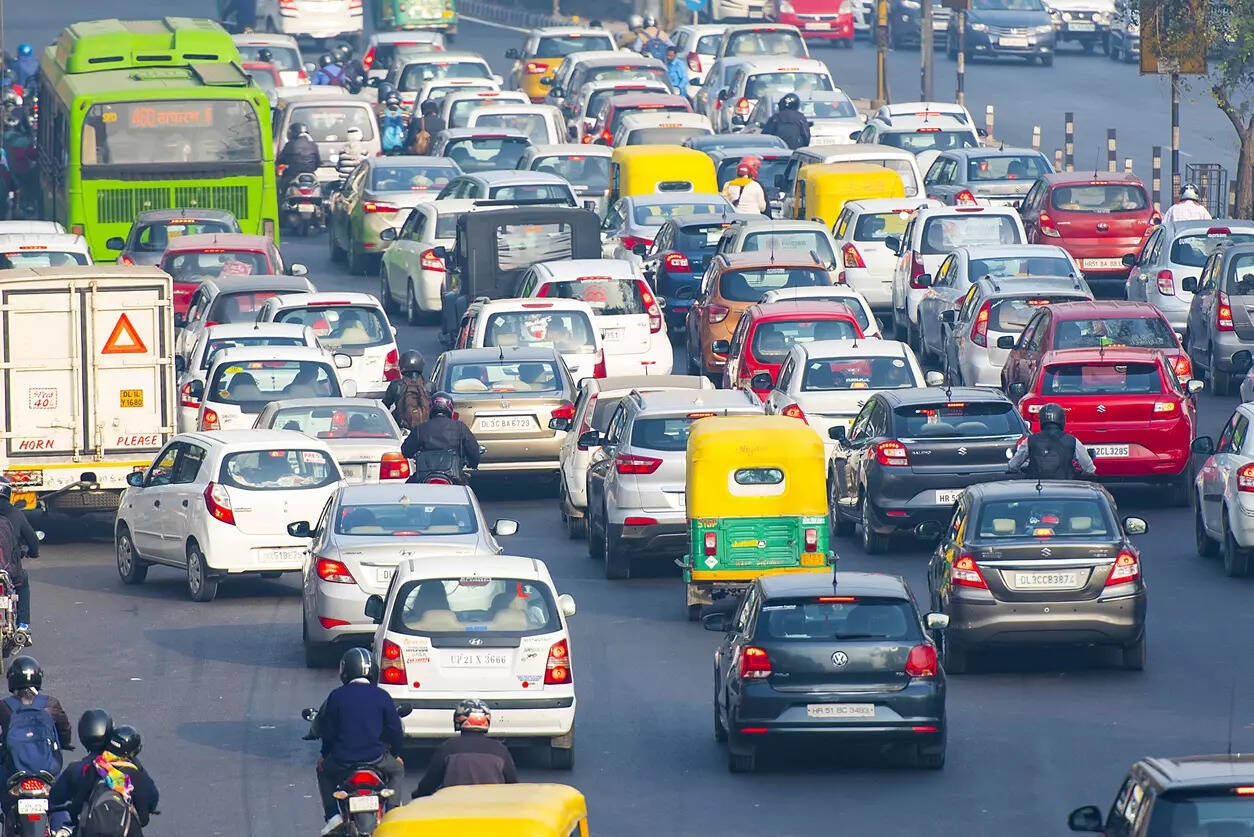Highlights
- GST cuts spur optimism: Lower 18% tax on small cars and two-wheelers expected to drive festive demand.
- Cess credit deadlock: Dealers fear losing ₹2,500–4,000 crore in unadjustable cess balances despite appeals.
- E20 rollout backlash: Consumers report mileage and wear issues, but govt dismisses concerns as exaggerated.
- EV adoption gap: Despite heavy subsidies, EV sales remain stuck at 7.6% versus 30% target for 2030.
 But while GST cuts dominated the mood, industry leaders skirted critical issues—both those arising from the tax rationalisation itself and long-standing challenges—wary of offending policymakers.
But while GST cuts dominated the mood, industry leaders skirted critical issues—both those arising from the tax rationalisation itself and long-standing challenges—wary of offending policymakers.“>
The annual gathering of India’s automobile industry heavyweights this year came just after the GST rate cut bonanza. For all appearances, industry leaders were upbeat at the 65th annual convention of the Society of Indian Automobile Manufacturers (SIAM), thanking Union ministers for the largesse. Most OEMs have already passed on the benefits to consumers, with price reductions across all vehicle segments, even before the start of the Navratri season.The GST rate cuts followed Prime Minister Narendra Modi’s announcement of a ‘Diwali Bonanza’, later approved by the GST Council. Passenger vehicles and two-wheelers under 350cc now qualify for a significantly lower tax slab of 18%, and showrooms expect higher consumer footfalls as prices fall.
But while GST cuts dominated the mood, industry leaders skirted critical issues—both those arising from the tax rationalisation itself and long-standing challenges—wary of offending policymakers.
The cess imbroglio
The most pressing concern is the unresolved cess balance issue. While the government has publicly assured resolution, officials privately insist that buoyant Navratri sales should offset the ₹2,500–4,000 crore shortfall. Dealers and OEMs, especially those with larger-car portfolios, may have to bear the burden.The Federation of Automobile Dealers Associations (FADA) has raised the alarm, writing to the Finance Ministry and the Prime Minister’s Office. It highlighted that dealers currently hold substantial compensation cess balances in their electronic credit ledgers, which cannot be adjusted against GST liabilities under current law. Unless a transitional pathway is provided, these balances will lapse, effectively converting legitimate credits into dead capital. Despite lobbying, hopes for relief remain slim. Auto dealerships across India presently hold significant validly-availed compensation cess balances in their electronic credit ledgers. Under the current law these balances cannot be used against CGST/SGST/IGST and will lapse unless a transitional pathway is created. This converts legitimate tax paid credits to dead capital at the very start of the festival season,” FADA said in its letter to the PM.
Festive sales boost
For now, OEMs are banking on a strong festive season. Hyundai Motor India’s COO Tarun Garg noted that small SUVs would see the maximum benefit, with cuts of up to 13%. Maruti Suzuki India also projected double-digit growth in small cars.
The ethanol storm
Another thorny issue is public discontent over the quiet implementation of 20% ethanol blending (E20), which has triggered concerns over mileage drops and vehicle wear. Union Minister Nitin Gadkari dismissed the criticism as “paid social media campaigns,” while PMO advisor Tarun Kapoor acknowledged minor challenges but insisted the transition had been smooth. Industry leaders, however, remain tight-lipped.
EV penetration far behind target
Equally troubling is India’s slow shift to electric vehicles. Despite over ₹40,000 crore spent on subsidies and incentives through FAME and PLI schemes, EVs make up just 7.6% of annual vehicle sales—far short of the 30% target by 2030.
NITI Aayog has recommended introducing mandates and disincentives to accelerate adoption, but the government maintains it has no such plans, preferring state- or city-level experimentation.
But Tarun Kapoor, advisor to the PM, told ET AUTO that there was no discussion within the government till now about any disincentives. “If anything is happening, it is only state or city specific. We are not thinking of disincentives, he said.
His views were echoed by Hanif Qureshi, Additional Secretary in the Ministry of Heavy Industries. Qureshi also said no disincentives were under consideration.
The sustainability gap
This year’s SIAM convention was themed around sustainability and the government’s Viksit Bharat goals. But with E20 controversies, unresolved tax issues, and EV penetration well below target, truly sustainable growth in the automobile industry still appears a distant goal.
Join the community of 2M+ industry professionals.
Subscribe to Newsletter to get latest insights & analysis in your inbox.
All about ETAuto industry right on your smartphone!
- Download the ETAuto App and get the Realtime updates and Save your favourite articles.





